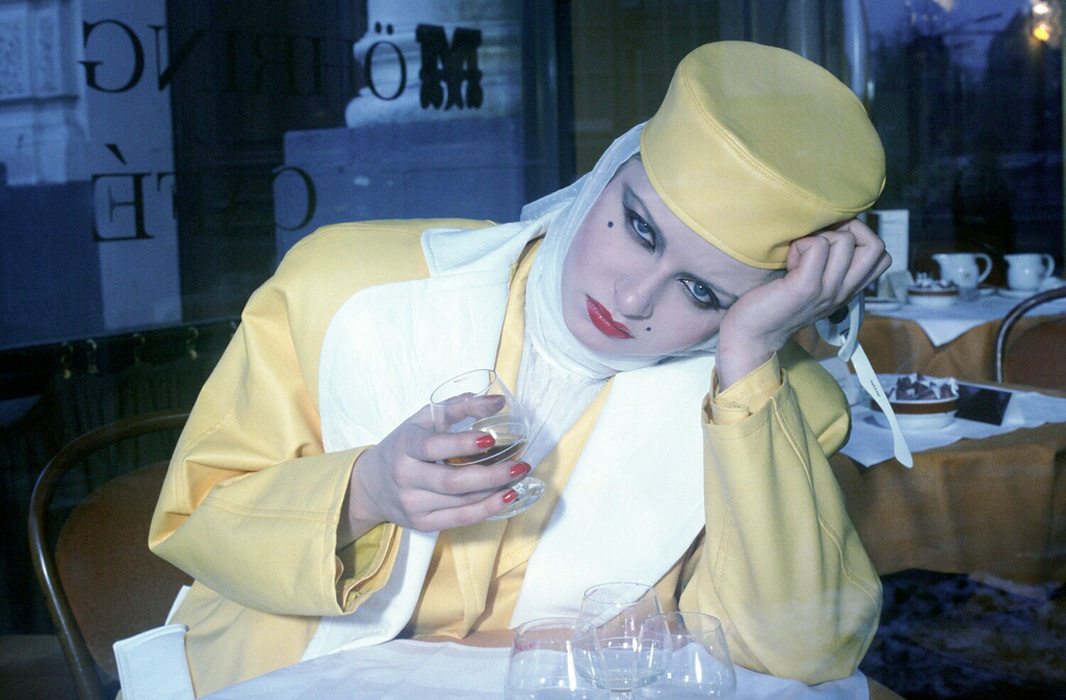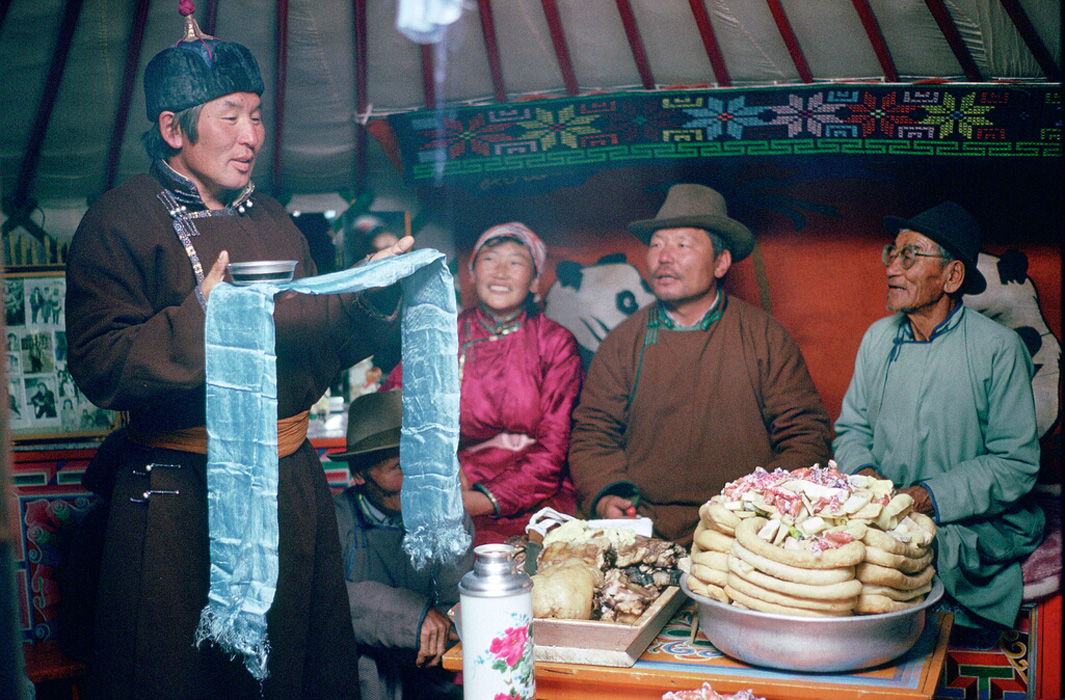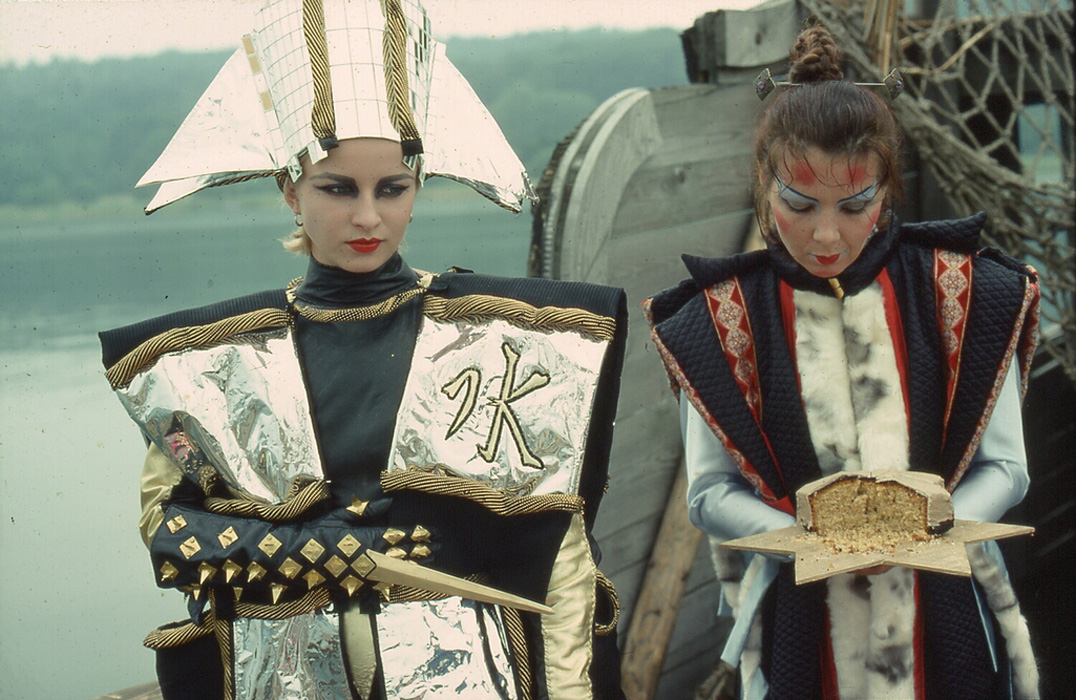Four by Ulrike Ottinger
Ulrike Ottinger’s perspective on the world, whether real or constructed, has no equivalent or correlate. While she explored issues of postwar politics, identity, and society like many of her New German Cinema contemporaries (Werner Schroeter, R.W. Fassbinder), the feminist and lesbian elements of her films — most of which center women and involve repeat collaborations with Tabea Blumenschein or Delphine Seyrig — set her apart. Her time in the 1960s Parisian Pop art scene and her experience in theater manifest in a strong aesthetic sense of theatricality and play. With the aid of her highly constructed aesthetics, her fictional films traverse the absurd, but with a seriousness which comes from duration. Ottinger lingers within a scene (or rather, a set) for extended periods of time and invites us to abandon our own logic as well as a linear narrative logic to marvel at the sheer surrealism and camp that plays out before us. These extended moments of observation also occur in her documentary works, which often have runtimes upwards of three hours. Perhaps there is something about the way she approaches eccentricities in her fictional worlds that saves her ethnographic work like Johanna D’Arc of Mongolia and Taiga from veering into pure exoticism. Rather than an intrusion or possesion, there is a distancing that separates both filmmaker and audience from the scene or moment — whether it is a goat sacrifice ritual in Mongolia or the passionate performance of a fictional opera on the beach. It is in this distance and the always-present feeling of foreignness that we become transfixed with Ottinger's films.
Co-sponsored by the Goethe-Institut Chicago.
Ticket of No Return (1979)

Ulrike Ottinger · 108m · DCP
The first of Ulrike Ottinger’s Berlin Trilogy follows Tabea Blumenschein (Ottinger’s then-partner and frequent collaborator) as an unnamed, glamorously enigmatic woman who buys a ticket to Berlin with the purpose of silently drinking her way through the city, and to death. Ottinger also serves as the cinematographer of the film, capturing a city still marked by war through distinctly styled tableaus and painterly displays of artifice and surrealism.
Monday, March 24 7pm
Taiga (1992)

Ulrike Ottinger · 501m · DCP
An early project marking Ottinger’s continued interest in Asia, Taiga is also an impressive feat of her ethnographic filmmaking. Spanning three years, this ten-part film follows the people and customs of Mongolia and reflects on the same beauty Ottinger later fictionalized in Johanna d’Arc of Mongolia. The long runtime and unrushed filmmaking imparts on the viewer a deep appreciation and sense for the pace of Mongolian life.
Saturday, March 29 (Part 1) 3pm · Sunday, March 30 (Part 2) 1pm · Monday, March 31 (Part 3) 7pm
Madame X - An Absolute Ruler (1978)

Ulrike Ottinger · 137m · DCP
A group of bored and oppressed women join a lesbian pirate ship, the Orlando (named, of course, after Woolf’s novel), looking for a life of seafaring adventure. However, they end up trading one repressive lifestyle for another as the sailors soon face Captain Madame X’s sadistic ways. Madame X is a fantastic, highly-stylized sapphic exploration of ritual, with dialogue consisting mostly of animal noises and nonsense.
Introduced by Professor Cassandra Guan of the Cinema and Media Studies Department.
Monday, April 7 7pm
Dorian Gray in the Mirror of the Yellow Press (1984)

Ulrike Ottinger · 150m · DCP
Cinema icon Delphine Seyrig stars as Frau Dr. Mabuse, the head of a media conglomerate who seeks to control and ultimately destroy the handsome Dorian Gray (played by Veruschka von Lehndorff in drag). One of Ottinger’s most narrative (and comedic) works, Dorian Gray is saturated with camp, withering satire, and extravagant set designs. The film’s extended opera scenes and Seyrig’s villainous performance are also delightful to behold.






